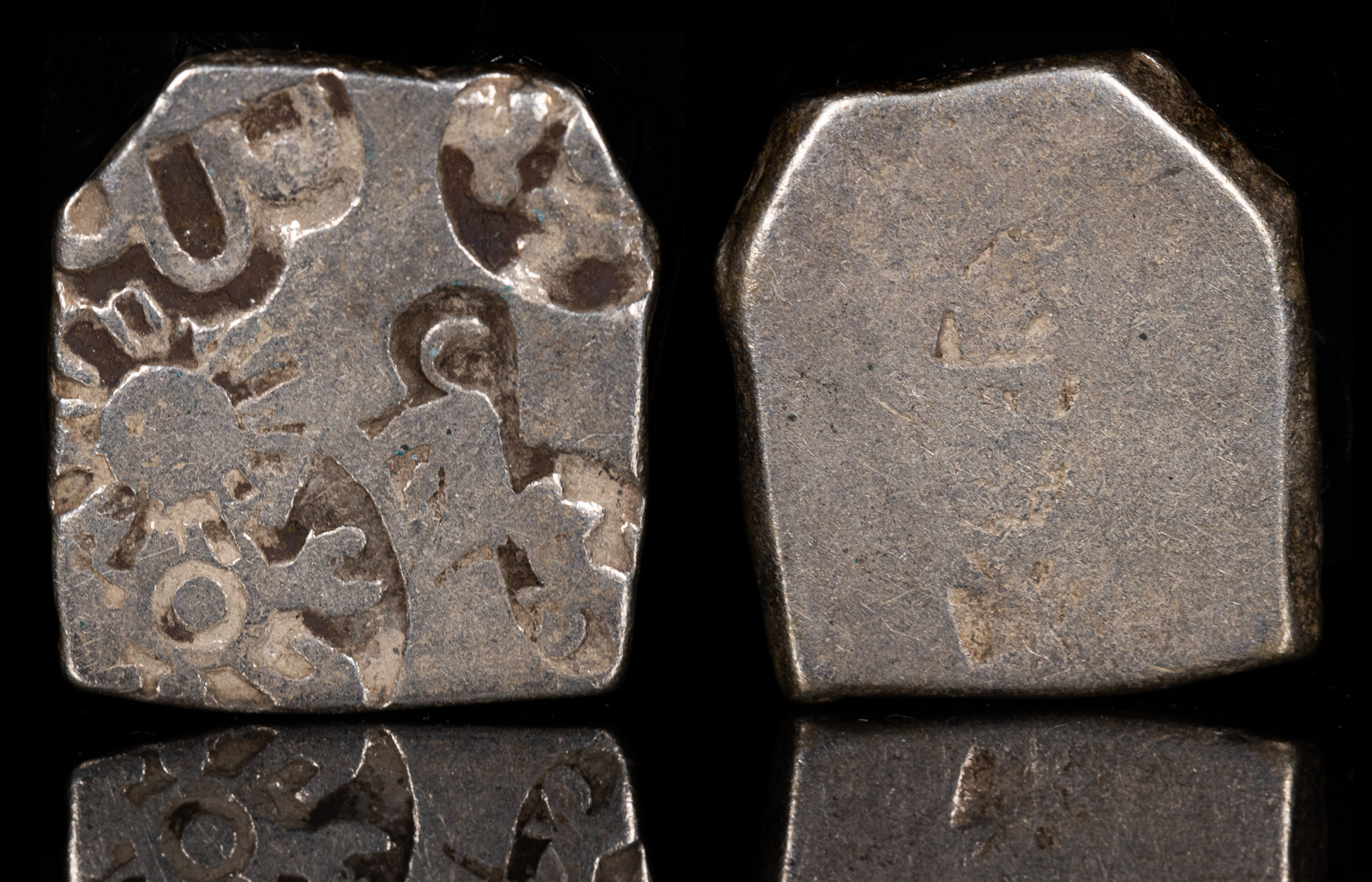
Obverse Five official punches.
Reverse Traces of unofficial banker’s marks
c. 4th-3rd century BCE
3.15g 16 x 14 mm.
GH 479
According to Gupta and Hardaker, the Series Va coins are the initial issues of the growing Maurya empire. They date these coins to c. 320-270 BCE, the time of Chandragupta Maurya and Bindusara.
This may be the oddest coin in my collection of The Era of the Diadochi. During this age, coins in India were punchmarked, and the art developed separately from the more familiar coins we know from the Greeks.
The punches themselves are a mystery. On this coin, they are (in my own descriptive words):
An eyeball with sixteen spokes going around it
Another eyeball with three arrows and protruding and three goldfish trying to get in
A line with one big hump in the center and two smaller humps flanking it
A dog with a bat in its mouth
Four goldfish swimming around a marble
Unsurprisingly, no one’s been able to make much sense of these. At first, people thought that certain rulers must have had certain marks. However, it’s been since proven that many marks were used for hundreds of years.
Nevertheless, two guys named Gupta and Hardaker did at least figure out that the coins belong to specific series, and were therefore able to estimate when certain coins were produced. This one is of series Va, which includes the time of Chandragupta Maurya, as well as his successor Bindusara.
Chandragupta Maurya eventually took over the Indian territory previously occupied by Alexander the Great. He and Seleukos I Nikator fought a war over the matter, then both sides agreed to a truce where Seleukos gave Chandragupta Maurya much of Pakistan and Afghanistan, and Chandragupta gave Seleukos 500 war elephants. These elephants were later used to devastating effect against Seleukos‘ enemies, most particularly Antigonos I Monophthalmos and his son Demetrios I Poliorketes.
This is my wife’s least favorite coin.
Approximate birth year of Chandragupta Maurya.
Chandragupta Maurya conquers the Nanda capital.
Capital of Magadha is besieged by Chandragupta Maurya.
Chandragupta Maurya attacks the Greek-Indian governors.
Chandragupta Maurya defeats the remaining Macedonian satrapies in northwestern India.
War erupts between Chandragupta Maurya and the forces of Seleukos I Nikator.
Chandragupta Maurya and Seleukos I Nikator reach a peace agreement. The Hindu Kush, Punjab, and parts of Afghanistan go to Chandragupta. Seleukos receives 500 war elephants, which he uses to terrify his European enemies. There is also a marriage alliance.
Estimated death of Chandragupta Maurya.